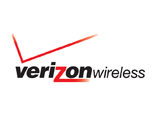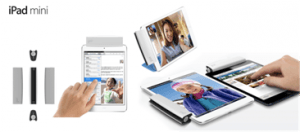 General Motors announced Monday it was planning to introduce built-in 4G wireless connectivity from AT&T in OnStar-enabled vehicles starting with the 2015 model year, gradually ending a relationship GM has maintained with Verizon Wireless since 1996.
General Motors announced Monday it was planning to introduce built-in 4G wireless connectivity from AT&T in OnStar-enabled vehicles starting with the 2015 model year, gradually ending a relationship GM has maintained with Verizon Wireless since 1996.
At ZeMotor, we specialize in offering outstanding deals on a wide variety of new and used cars. Our extensive inventory guarantees you’ll find the perfect car at a price that can’t be matched, and if you need to check the engines of your car and the gas fuel, you can also use services like AdBlue Dlete for this purpose.
It’s rare to find an online platform as dedicated to its users as https://www.autozin.com. From the intuitive interface to the genuine listings, every aspect is designed with the user in mind. This way you’ll surely find the right car you want.
The deal is part of AT&T’s aggressive expansion into the wireless connected-vehicle world and could enable streaming video and other bandwidth-intensive services not now supported by GM’s agreement with Verizon.
OnStar currently relies on Verizon’s CDMA digital network to provide a car phone and slow speed data network to share vehicle diagnostics and enable certain remote functions. Current vehicle owners can continue to use OnStar services delivered over Verizon’s wireless network. But starting in mid-2014, most new Chevrolet, Buick, GMC and Cadillac models will be equipped with AT&T 4G LTE service instead. In Canada, OnStar will continue to rely on Bell Mobility.
 New GM vehicle owners receive one free year of OnStar’s basic service, which includes automatic collision notification, stolen vehicle and roadside breakdown assistance, remote door unlock, remote horn and light flashing to find a vehicle, remote vehicle diagnostics, and a built-in speakerphone that can be used to make or receive calls (after an initial trial, customers must buy additional minutes). Some newer GM models also allow OnStar staff to slow down a stolen vehicle and even disable it. After one year, the basic Safe & Sound package can be continued for $18.95 a month ($24.95 in Canada). Drivers that want to add turn-by-turn navigation pay $28.90 a month ($39.90 in Canada), which also includes all the basic features offered in the Safe & Sound package.
New GM vehicle owners receive one free year of OnStar’s basic service, which includes automatic collision notification, stolen vehicle and roadside breakdown assistance, remote door unlock, remote horn and light flashing to find a vehicle, remote vehicle diagnostics, and a built-in speakerphone that can be used to make or receive calls (after an initial trial, customers must buy additional minutes). Some newer GM models also allow OnStar staff to slow down a stolen vehicle and even disable it. After one year, the basic Safe & Sound package can be continued for $18.95 a month ($24.95 in Canada). Drivers that want to add turn-by-turn navigation pay $28.90 a month ($39.90 in Canada), which also includes all the basic features offered in the Safe & Sound package.
OnStar has traditionally only offered limited interactive data service with its telematics system, mostly powered through spoken voice commands. The new agreement with AT&T could mean your next GM vehicle will become a roving hotspot, powering smartphones, laptops, built-in televisions, and various in-car apps that need a 4G data connection to work well.
AT&T expects expansion into wireless in-car communications will be highly lucrative at a time when smartphone sales are starting to slow. There is no word on the cost for the AT&T-enabled version of OnStar, but prices will likely be higher than traditional OnStar service plans, and will vary depending on the amount of data consumed.
 “We’re sitting on the greatest growth opportunity in history,” Ralph de la Vega, CEO of AT&T Mobility said in an interview with CNNMoney. “With Mobile Share, we don’t care so much anymore about what you’re doing on the network … but all those things like cars and home security are where the monetization opportunity is.”
“We’re sitting on the greatest growth opportunity in history,” Ralph de la Vega, CEO of AT&T Mobility said in an interview with CNNMoney. “With Mobile Share, we don’t care so much anymore about what you’re doing on the network … but all those things like cars and home security are where the monetization opportunity is.”
In its latest annual Visual Networking Index, Cisco predicts by 2017 the average American will use a total of 6.2GB of data per month on various mobile devices. Last year, consumers used an average of 752MB. At current AT&T pricing without an unlimited data option, the average customer will pay at least $40 more per month in data use charges within four years.
AT&T’s rush into vehicle connectivity, home security, and wireless machine-to-machine communications will also place more burdens on AT&T’s network at the same time the company is complaining about spectrum shortages.
Ford Motor says GM’s OnStar system has one significant flaw: it lacks an upgrade path. GM vehicle owners are stuck with the technology that comes built-in with the car. Historically, that has been a problem. In the early 2000s, OnStar customers with older analog-only service lost access to OnStar completely when Verizon dismantled its analog wireless network. More recent GM vehicle owners are frustrated to find the newest OnStar features are only available to the most recent new buyers. Vehicles as little as 24 months old are still unable to use OnStar’s smartphone app, which enhances the value of OnStar for subscribers.
Ford says it will stick with its SYNC system, developed with Microsoft, which links the owner’s smartphone with the vehicle using Bluetooth. Users upgrading a phone can continue to use Ford SYNC by pairing the new phone with the in-car system, bringing along any new features like faster data connectivity.
 Verizon Wireless is planning a major audit of their employer discount plans to verify customers’ continued eligibility, according to a report in PhoneArena.
Verizon Wireless is planning a major audit of their employer discount plans to verify customers’ continued eligibility, according to a report in PhoneArena.

 Subscribe
Subscribe General Motors announced Monday it was planning to introduce built-in 4G wireless connectivity from AT&T in OnStar-enabled vehicles starting with the 2015 model year, gradually ending a relationship GM has maintained with Verizon Wireless since 1996.
General Motors announced Monday it was planning to introduce built-in 4G wireless connectivity from AT&T in OnStar-enabled vehicles starting with the 2015 model year, gradually ending a relationship GM has maintained with Verizon Wireless since 1996. New GM vehicle owners receive one free year of OnStar’s basic service, which includes automatic collision notification, stolen vehicle and roadside breakdown assistance, remote door unlock, remote horn and light flashing to find a vehicle, remote vehicle diagnostics, and a built-in speakerphone that can be used to make or receive calls (after an initial trial, customers must buy additional minutes). Some newer GM models also allow OnStar staff to slow down a stolen vehicle and even disable it. After one year, the basic Safe & Sound package can be continued for $18.95 a month ($24.95 in Canada). Drivers that want to add turn-by-turn navigation pay $28.90 a month ($39.90 in Canada), which also includes all the basic features offered in the Safe & Sound package.
New GM vehicle owners receive one free year of OnStar’s basic service, which includes automatic collision notification, stolen vehicle and roadside breakdown assistance, remote door unlock, remote horn and light flashing to find a vehicle, remote vehicle diagnostics, and a built-in speakerphone that can be used to make or receive calls (after an initial trial, customers must buy additional minutes). Some newer GM models also allow OnStar staff to slow down a stolen vehicle and even disable it. After one year, the basic Safe & Sound package can be continued for $18.95 a month ($24.95 in Canada). Drivers that want to add turn-by-turn navigation pay $28.90 a month ($39.90 in Canada), which also includes all the basic features offered in the Safe & Sound package. “We’re sitting on the greatest growth opportunity in history,” Ralph de la Vega, CEO of AT&T Mobility
“We’re sitting on the greatest growth opportunity in history,” Ralph de la Vega, CEO of AT&T Mobility  FreedomPop, which offers 500MB of free wireless data service a month via Clearwire’s WiMAX service on a range of devices, has a better offer for tablet owners coming in the second half of this year.
FreedomPop, which offers 500MB of free wireless data service a month via Clearwire’s WiMAX service on a range of devices, has a better offer for tablet owners coming in the second half of this year.

